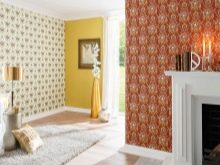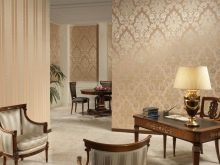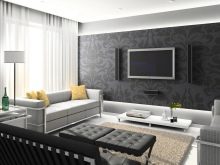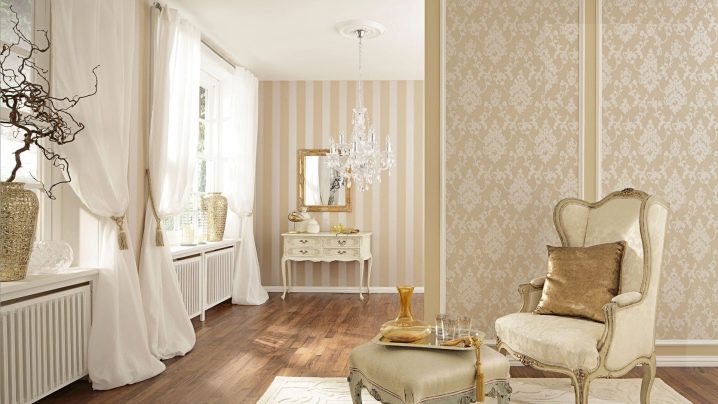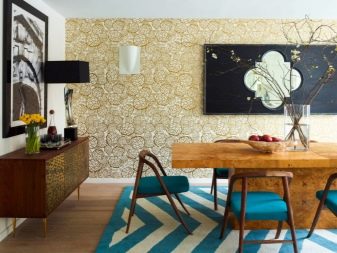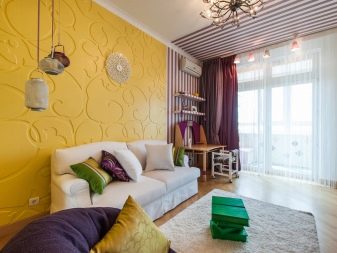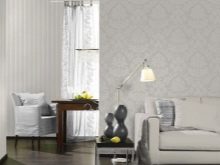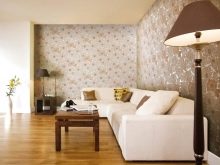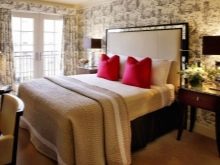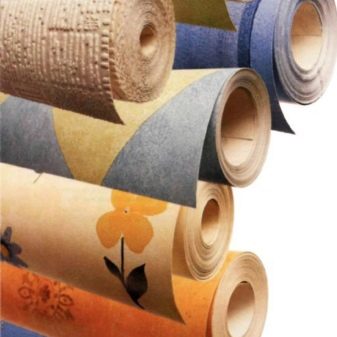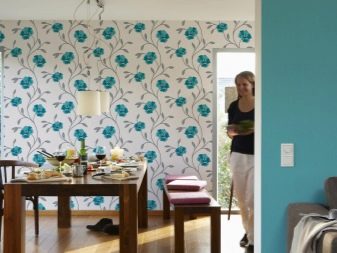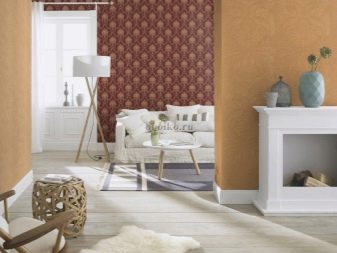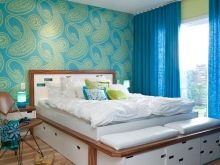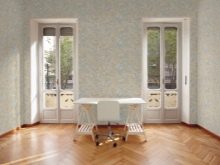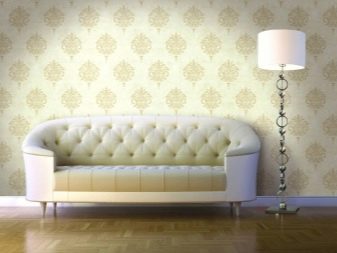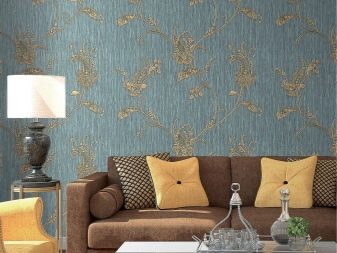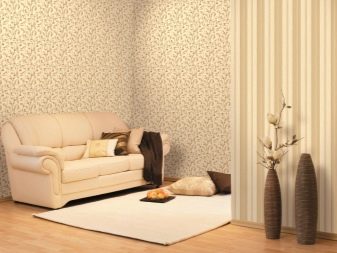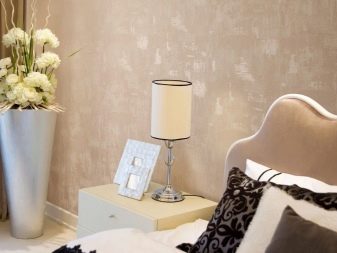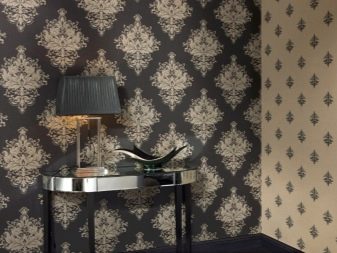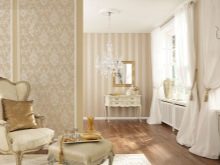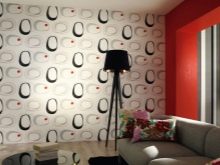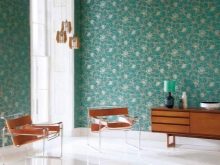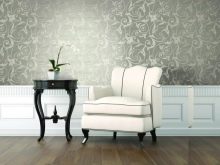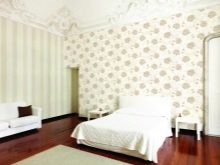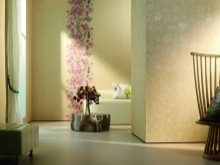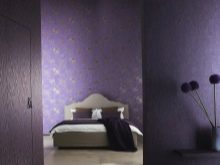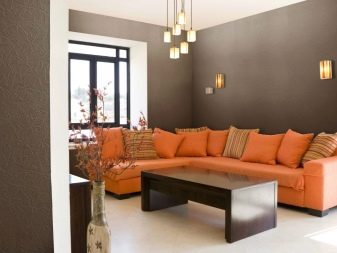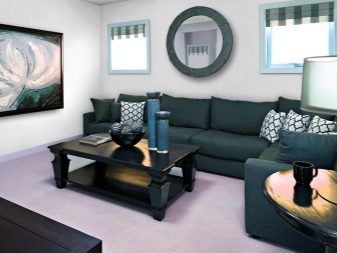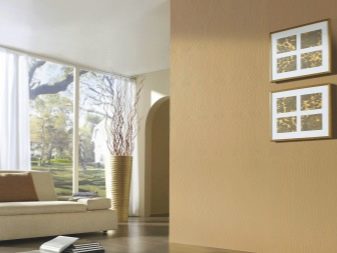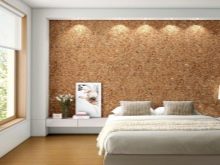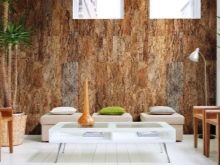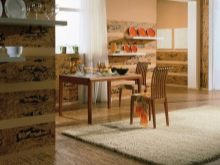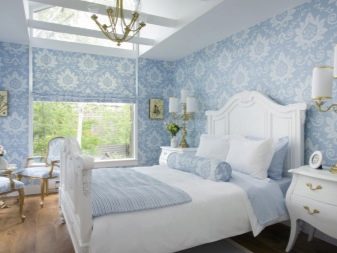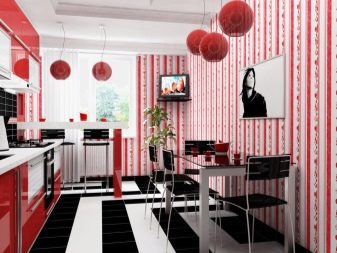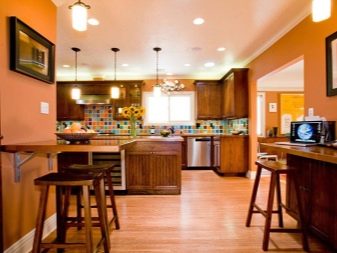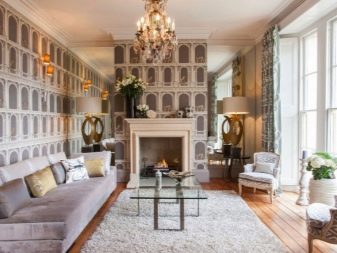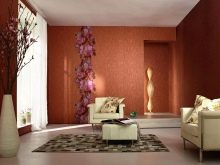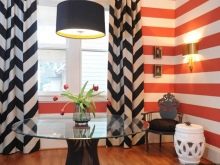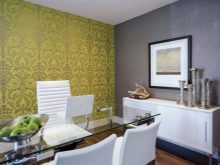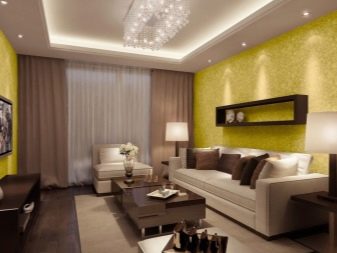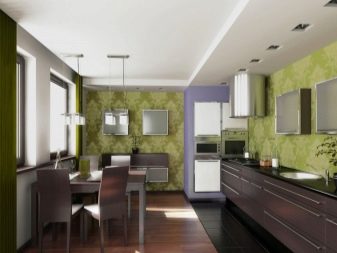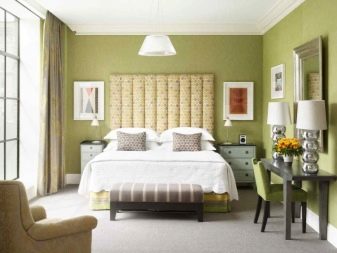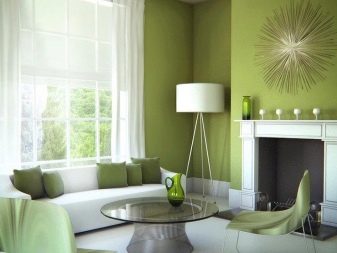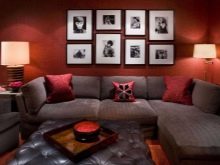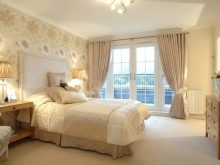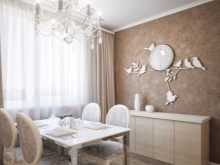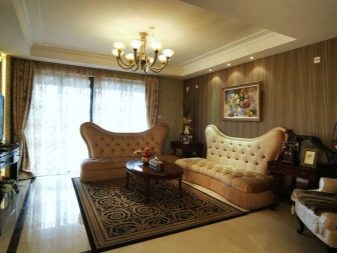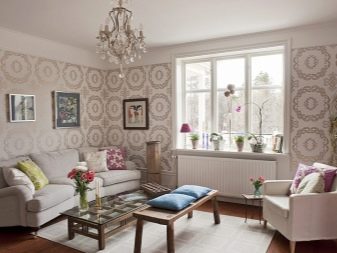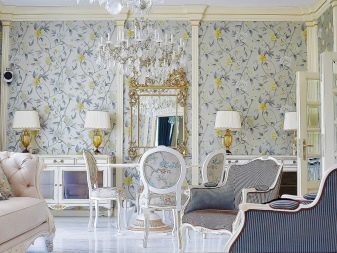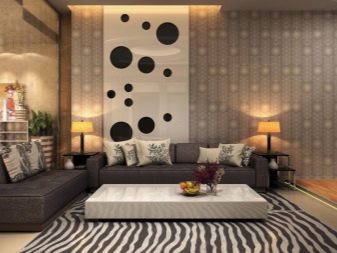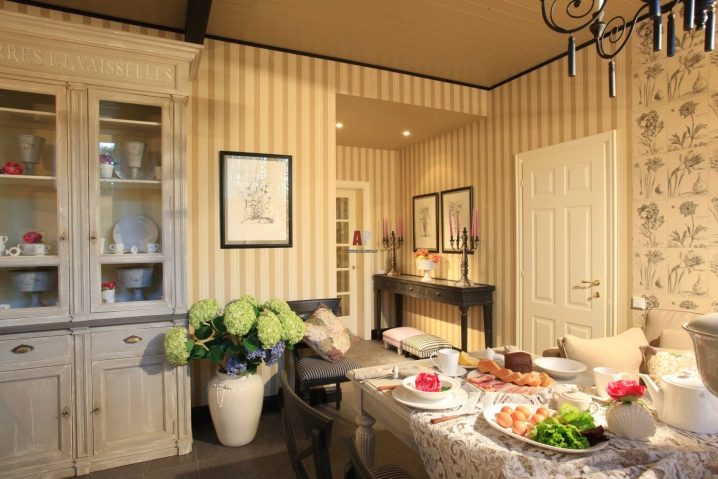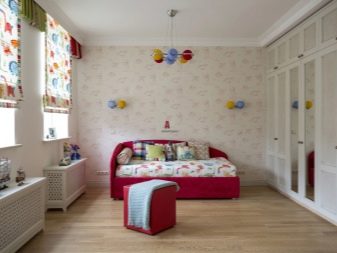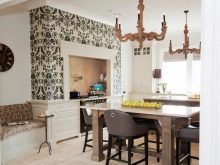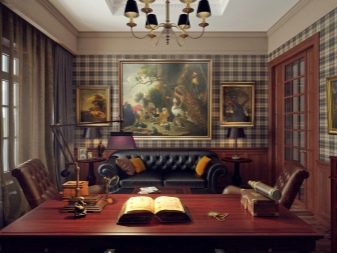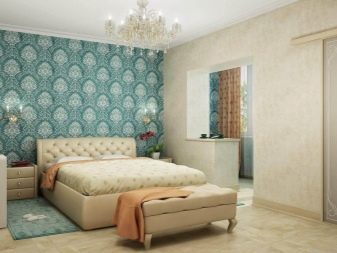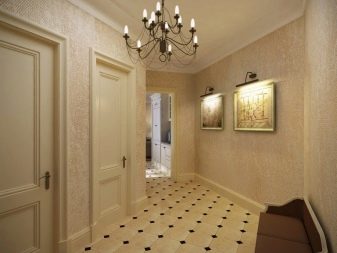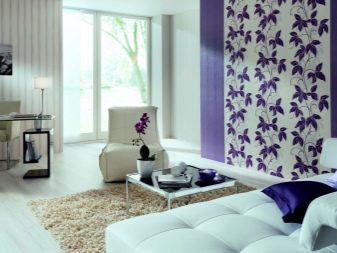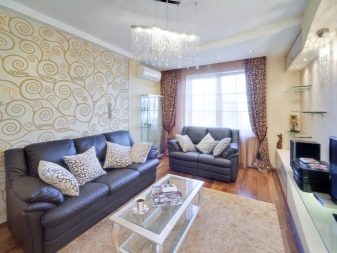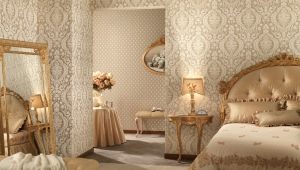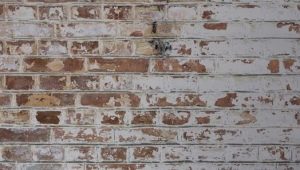How to choose wallpaper?
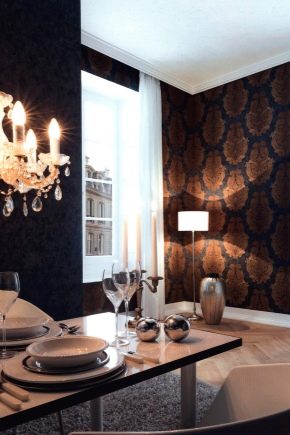
Most people prefer not to resort to expensive repair work when updating the interior, and therefore the best way to update the situation for them is to change the wallpaper. With their help, in a fairly short time, you can drastically change the interior of any room, the main thing to take into account all the features of this finishing material.
Product Features
Before buying a wallpaper, you should first familiarize yourself with the various types of this finishing material and only then choose the material based on your taste preferences and taking into account the purpose of the room.
Modern classification of wallpaper is very extensive, with the move to make a choice is very difficult. But there are certain criteria that will help you choose the most suitable option.
Depending on the appearance of the wallpaper are smooth, embossed and with imitation of the texture of different materials.
Drawing on a smooth wallpaper on tactile sensations does not have all sorts of bumps. But on the embossed wallpaper pattern not only in appearance but also to the touch has a tangible relief. In turn, relief finishing materials are divided into corrugated and embossed types.
Wallpaper with imitation texture very accurately convey all the subtleties of other finishing materials. Most often imitated brickwork, tile, wood logs, plastered wall and many other compositions of a variety of materials.
Another important criterion when choosing wallpaper for walls is their resistance to moisture. As a rule, bona fide manufacturers designate this resistance with a certain icon.
Regular wallpaper without any protective layer does not tolerate high humidity, and therefore they can not be cleaned with water. For these types of dry cleaning is the best option.
Moisture-resistant types of wallpaper have an icon with one wavy line. They are allowed to be cleaned with a small amount of water, but without cleaning products. As a rule, a slightly damp cloth or foam sponge is used for cleaning.
Washable wallpaper types are indicated on rolls by an icon with two wavy features. For them, it is acceptable not only to clean with water, but also with the use of suitable means.
For super-washable wallpapers have their own designations. One icon with three wave-like features is usually supplemented with a brush image. For this type of wallpaper is not terrible everyday care with water and special tools, as well as the use of a brush, they will survive without damaging the structure of the canvas.
Depending on the density of the wallpaper are divided into two types. Light materials include wallpapers with a weight not exceeding 110 g / m². The weight of heavy, very dense wallpaper is much higher than 110 g / m², as they are usually composed of several layers.
Options
The material of manufacture is the main criterion that is most often paid attention to, and therefore, in order to choose the right option for an apartment, you should thoroughly understand all the advantages and disadvantages of wallpapers belonging to different types.
Paper wallpaper is the most traditional way to finish walls in a residential area. Their active distribution on the European continent began in the 18th century.
All modern paper versions are divided into single-layer (simplex) and two-layer (duplex) wallpaper. Both species have a number of positive characteristics, which include good vapor permeability, environmental safety and ease of pasting.
But there are downsides to paper canvases.
The main disadvantage is their fragility. When gluing on the wall, the wallpaper quickly becomes useless, as their surface slopes to abrasion. While working with canvases, extreme care is required, since there is a high probability of rupture of the canvass due to the strong swelling of the paper base. Two-layer versions are somewhat stronger than single-layer species, but even they will not be able to hide the slightest flaws in the walls and therefore are completely inappropriate for uneven surfaces.
Paper wallpaper is completely unstable to ultraviolet rays, very quickly fade. In addition, due to the porous structure they absorb all odors from the surrounding space.
Vinyl wallpapers have a stronger structure and consist of two layers. The basis is paper or fabric coated with a thin layer of polyvinyl chloride.The PVC layer provides resistance to dirt, impermeability to moisture and all sorts of mechanical damage.
To date, there are several varieties of this type:
- Heavy vinyl wallpapers have a very dense structure, with their help, you can hide small irregularities and other imperfections of the walls.
- Chemical embossed wallpaper is characterized by resistance to sunlight and high humidity. Their surface is perfectly cleaned using special tools.
- Compact vinyl are variants with a surface that is particularly resistant to mechanical stress. Their drawing, as a rule, is an imitation of different materials.
- Silk screen printing. This option has a smooth surface with a silky sheen. Most often, they are glued onto perfectly-treated walls, as their density does not allow to hide even the slightest flaws in the surface.
The disadvantage of all types of vinyl is poor air permeability. In addition, they are flammable, in case of fire, very toxic substances are released into the surrounding space. When sticking cloths onto walls, vinyl wallpapers are subject to strong stretching, and when dried, they shrink, which can lead to a divergence of the seams.But unlike paper versions, there is plenty of time to fit them, they do not immediately clutch with the surface to be glued on, it is quite enough for a few minutes to exactly match the design.
Non-woven wallpapers are, in fact, a kind of vinyl options, but they use non-woven as the basis. This material consists of viscose yarns, due to which products gain strength and special density. There are two types: with PVC coating and without it.
The enhanced vinyl coating is applied to the substrate with a thin layer that has microscopic pores. Due to these pores, the air circulates freely, and therefore the walls breathe. Quality non-woven fabrics are not subject to shrinkage and strong stretching when glued to the surface of the wall. In addition, this type of wallpaper is suitable for painting. Having pasted once, the canvases can be repainted in any color you like many times.
Non-woven wallpapers have other advantages. Wide or narrow cloths on the reverse side have a special adhesive composition, and therefore it is not necessary to apply glue on them, it is enough just to smear the surface of the walls.In addition, if you want to change the wallpaper, then you can remove them quickly enough, and the surface of the walls at the same time remain completely clean.
Glass fiber is one of the most modern finishing materials. The basis for them are threads made of fiberglass, thanks to which the wallpaper has acquired a special strength and reliability. This fire-resistant, eco-friendly, non-toxic and durable material is also a very profitable acquisition from an economic point of view, as it can be stained up to 20 times. Fiberglass, consisting of durable reinforcing fibers, is an excellent protection of the walls, not allowing them to crack and preventing the formation of various defects.
The basis of textile wallpaper can be paper or non-woven, on top of which a layer of natural fabrics is applied. Silk, flax, velor, felt and even jute fibers can be used as the top layer. The surface fiber can be made from whole cloths or consist of threads of natural fabrics.
In addition, custom made fabric of dense fabric. With it, the room is covered completely, creating a monolithic wall covering with only one seam, which is completely invisible to the eyes.These wallpapers well hide the flaws of the walls, are resistant to ultraviolet radiation, retain heat well and are, among other things, also a great sound-proofing material.
Among the disadvantages of this material are high cost and poor resistance to dust and all sorts of pollution. But if the canvases are treated with special substances, then the surface, in addition to antistatic properties, also acquires fireproof properties.
For fans of natural coatings will be interesting cork wallpaper. The basis of this type is paper, on which a layer of cork coating in 1 mm is applied. Cork material perfectly absorbs sounds, retains heat and prevents dust from settling. In addition, the sun's rays are not terrible for him, he does not fade in the sun.
But it is worth remembering that the presence of pets is detrimental to this coating, there is a greater risk of damage to the surface. But if you glue on this material only places that are inaccessible to the claws and teeth of animals, then cork wallpapers will last a very long time.
Color solutions
Today, manufacturers offer buyers a huge selection of wallpapers not only on the use of material,but also in color. When selecting a particular color, you should take into account many factors that affect the overall perception.
Equally important in the selection of colors is the illumination of the room. For rooms where the windows face the north side, and the light in it is clearly not enough, it is better to use bright warm shades of wallpaper. As a rule, soft peach, beige, light yellow and other shades are used to add light and space to the room. For smaller rooms with windows facing south, it is preferable to have slightly different colors: blue, pale green and other cool colors.
When choosing a wallpaper is worth remembering about the purpose of a particular color for the room.
Bright colors, such as red, orange, blue, are absolutely not suitable for the bedroom. There it is preferable to use wallpaper that has a calm tone. Wallpapers in red or orange are more suitable for the kitchen, as both colors and their shades contribute to an increase in appetite.
Children's room needs a calm color wallpaper. A pastel beige tone will look equally good in a room designed for both girls and boys.
The living room is space for fantasy. You can combine different colors.The main thing is to correctly combine the shades and the texture of the material.
When choosing a specific color wallpaper should also take into account the color and texture of furniture in the room. They should be combined in color with installed furniture, but should not be identical shade. If the furniture in the room has a beige tint, then the wallpaper should have a different color, in no case beige.
It is also worth remembering: the color of the coating on the floor should not be identical to the color of the wallpaper.
Furniture in dark colors will be perfectly combined with wallpaper in pistachio color. You can dilute them with wallpaper in gray and white.
Olive canvases on the walls are combined not only with dark, but also with light furniture. This color promotes relaxation and increases appetite. Therefore, if the room is spacious enough, it is best to use it in the living room or to decorate the walls of the kitchen, as olive visually reduces and darkens the room.
Furniture made from expensive materials is perfectly combined with wallpaper, which has rich rich and noble shades. Coffee, burgundy, bitter chocolate, creamy and beige are very suitable for furniture with a luxurious texture.
Decor
To date, there are many very different patterns of wallpaper. Choosing one or another type of wallpaper, in addition to color, it is worth considering the patterned picture.
Most typical apartments are characterized by a low ceiling position. As a rule, the distance from the floor to the ceiling is within 2.5 m, and, in order to visually lift it up, designers advise to choose a suitable pattern. In this case, suitable paintings with vertically arranged patterns, as well as wallpaper, where there are bands running along the entire canvas. For rooms with high ceilings, you can select options with large massive patterns and ornaments.
It is worth remembering that large drawings partially conceal space, while small ones, on the contrary, visually expand it. Floral motifs are more suitable for rooms decorated in a classic style, and abstract wallpaper design is a suitable option for modern interiors.
Which is better?
There are standard tips, following which you can choose the right wallpaper for any room, apartment, house or cottage.
First of all, we pay attention to the type of wallpaper, taking into account the purpose of the room.
- For a child's room the main thing is security, so the paper version is preferred. Even their lack of strength is not such a big disadvantage, since absolutely any type of wallpaper will be short-lived in a room where children live. Walls for children, as a rule, are a convenient platform for the development of artistic skills, and therefore it makes no sense to buy very expensive products. Yes, and replace the spoiled piece of paper wallpaper can be quickly and without special material costs.
The choice of color depends more on the preferences of the owners. Bright and juicy shades of wallpaper with cartoon characters depicted will be very popular with toddlers and children of primary school age, and for older children, you can choose quieter shades with a suitable pattern.
- For kitchenOf course, suitable wallpaper, resistant to various types of pollution, moisture-resistant and durable. It is worth thinking about buying either non-woven or vinyl wallpaper. They are best suited for this room. A small kitchen needs light wallpaper with a small pattern. In a large kitchen, you can combine rich colors with more soothing tones.
For a studio apartment, where the kitchen is combined with the dining room and living room, wallpaper performs a zoning function. Here you can experiment not only with colors, but also with the textures of products. In the kitchen and dining area the best option would be durable vinyl wallpaper, and for the living room you can pick up other types. The main thing - to combine them in color and texture. Selecting individual zones using wallpaper is also a good option for one-bedroom apartments.
It is not necessary to glue textile, paper and other types of wallpaper, which are not moisture resistant, they will quickly become useless. In addition, they are distinguished by good absorbency, which is a definite disadvantage for the kitchen. Textile wallpaper is more suitable for the design of the walls of bedrooms and offices. They are better to take under the curtains, if they are already purchased.
- To the design of the walls the hallway should be approached from a practical point of view and choose strong and durable options. Glass fiber is the best option for this room, because in addition to durability, they also have excellent sound insulation properties. A good alternative would be non-woven with vinyl coating.
- For balcony more suitable liquid and vinyl wallpaper. Both species are moisture resistant, do not fade from sunlight and are characterized by a long service life.
Stylish ideas and examples in the interior
- Today, there is a trend such as the combination of colors and patterns in the design of the walls. Most often, wallpaper with a pattern is perfectly combined with monochrome canvases.
- Geometric print or floral motifs as a pattern on the wallpaper are the most popular and popular. As a rule, with their help you can place accents on any wall. The print can be small or large, bright or blurry, it all depends on the style of the room and the taste preferences of the owners. The main thing is to choose the right combination without disturbing the overall light perception of the room.
How to choose the right wallpaper, you can learn from the video below.
